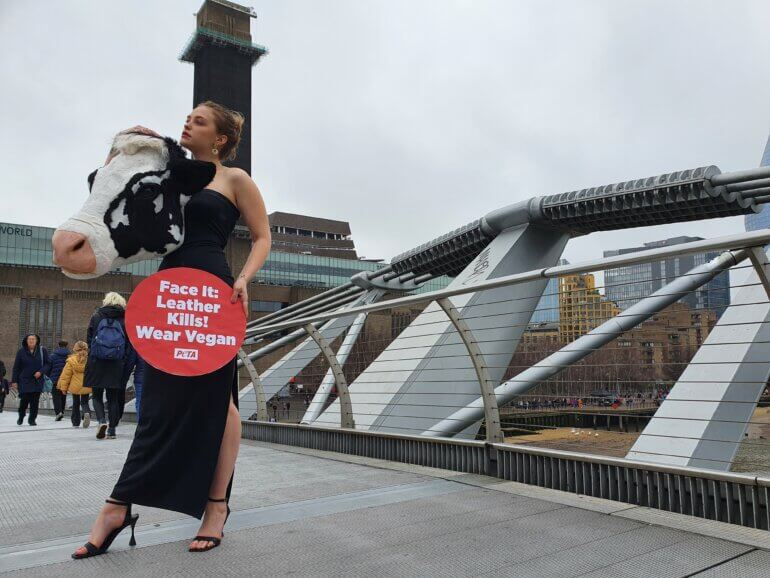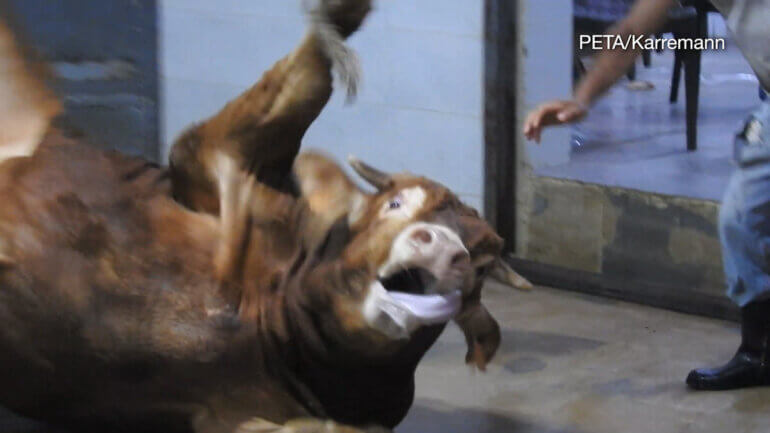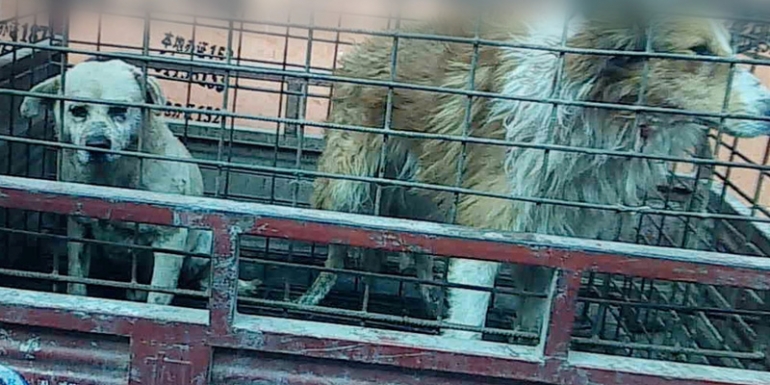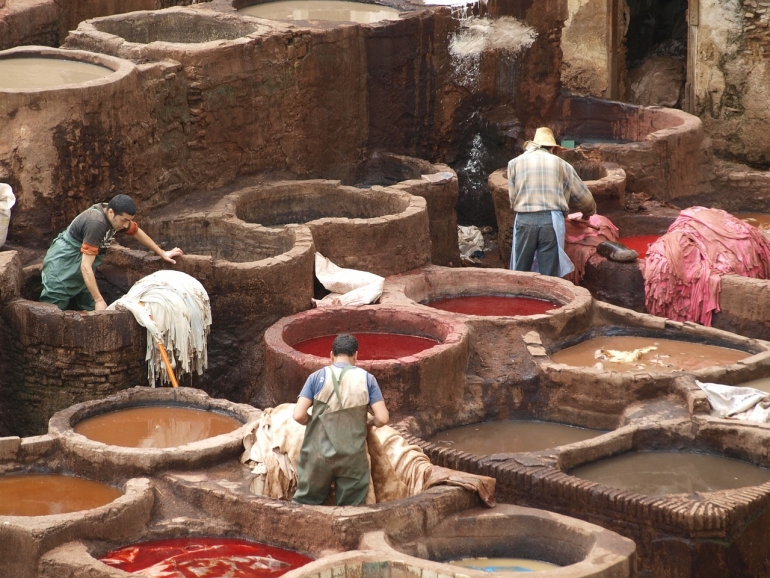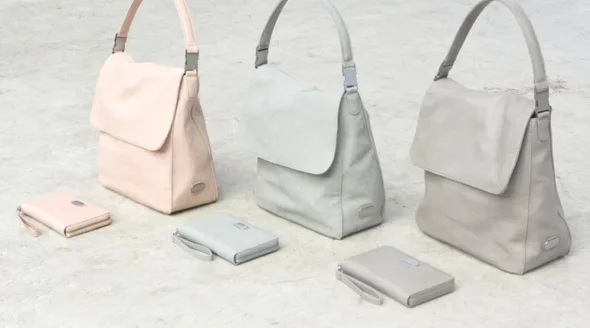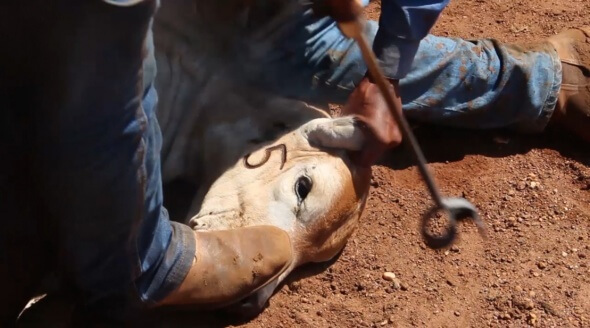PETA’s Schiaparelli-Style ‘Cow’s Head’ Dress Sparks Conversation About Vegan Leather
On the eve of London Fashion Week, a PETA model strutted her stuff along the Millennium Bridge “catwalk” wearing a couture dress with a faux cow’s head in a salute to Schiaparelli’s style – but with a vegan twist.
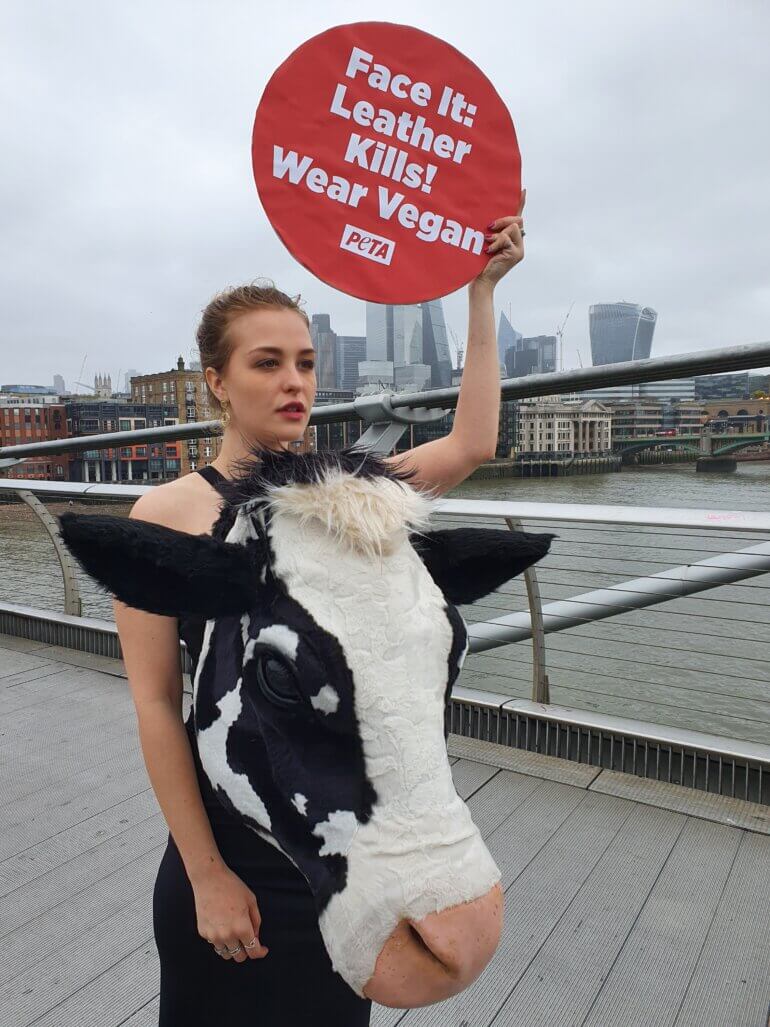
The action follows the stir at Paris Fashion Week caused by the designer’s three-dimensional animal-head designs, worn by Naomi Campbell and other models.
Schiaparelli’s “animal heads” sparked a much-needed conversation about the harm done by trophy hunting, and now, PETA’s spin invites a similar dialogue around the cruelty inherent in the leather industry.
It’s time for fashion lovers to ditch animal leather in favour of vegan materials. With the global vegan leather market expected to grow to over £35 billion by 2025, there are now more sustainably produced animal-free leather options than ever, including plant-based fabrics made from pineapple leaves, apples, and mushrooms.
Leather Kills
More than 1 billion animals, including sensitive cows, are killed each year for their skin. Cows in the leather industry are confined to filthy pens and endure chronic infections and disease caused by extreme crowding before they are sent to the abattoir. Bulls are castrated without pain relief.
Just watch this video from Brazilian ranches to get a glimpse of the terror and pain inflicted on cows as they’re killed for their skin and flesh:
You Never Know Whose Skin You’re In
It’s not only cows who are killed in the leather trade – sheep, horses, goats, pigs, and even cats and dogs are also victims of the industry. An estimated 2 million cats and dogs are killed in China each year for their skin. When you wear leather, there’s no easy way to know for sure whose skin you’re in.
Cow Leather Is the Most Polluting Material in Fashion
Turning animals’ skin into leather requires 130 different chemicals, and animal agriculture, which includes the leather industry, is one of the leading contributors to the climate catastrophe. And since the bulk of the environmental impact associated with leather production – a whopping 93%, according to luxury fashion conglomerate Kering’s 2016 “Environmental Profit and Loss” report – occurs before the skins are sent to tanneries, touting “green” processing methods, such as those used to create vegetable-tanned and chrome-free leather, is really just greenwashing.
Leather Production Damages Human Health
A PETA exposé of the leather industry in Bangladesh shows that leather production is toxic for human health, too. Unprotected workers, including children, stand barefoot as they soak hides in carcinogenic chemicals, and the noxious waste is then dumped into rivers.
As tanning is such a dangerous process, it’s no longer undertaken in most European countries or the US, so operations are moving elsewhere – jeopardising the health of people in other parts of the world so that consumers in the West can continue wearing leather shoes and jackets.
Choose Vegan Leather
All animals deserve our compassion and the right to live in peace – and today’s beautiful, sustainably made vegan fabrics mean there is no need to kill animals for a killer look. We’ve put together this guide to help you wear vegan:
Cows Need Your Help
Take a moment to help cows and other animals killed for fashion. Please send e-mails to designers, fashion houses, and retailers urging them to stop using animal-derived materials in their collections:

